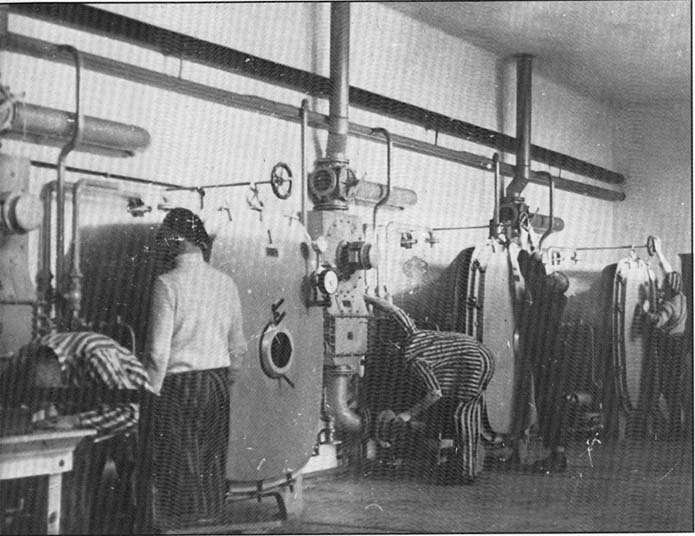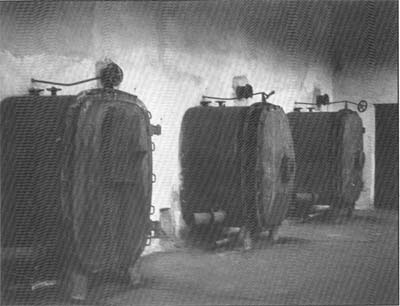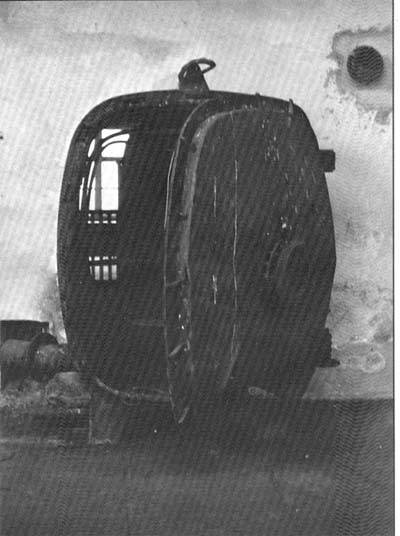 |
| Photo 31: [PMO neg. no.20995/476] |
| The battery of three autoclaves, south, clean side numbered above the manufacturer’s nameplate 1, 2, 3 from left to right. The steam arrived through the light coloured pipe above the autoclaves. It is more than likely that it came from the basement boiler. The dark pipe connected the pressure vessel to the hot water tanks. An electric motor enabled the steam to be rapidly evacuated at the end of the cycle (to the left of each autoclave). On the door of autoclave 1 (Photos 31 and 35) are two gauges, one showing the pressure and the other the temperature. On the table (Photo 35) a prisoner is filling in the operating report and there is a clock for timing the sterilization cycle. For those who believe that autoclaves were gas chambers, I would point out that on Photos 31 and 35 there are no gas masks to hand and nobody is wearing a gas mask. The two short rails in front of each autoclave are to receive the trolley carrying the effects to be disinfected. |
|
| |
 |
Photo 32 |
|
| |
| Photo 33 |
 |
| Photos 32 and 33 |
| Present state of the autoclave, south side, doors closed (Photo 32) and open (Photo 33). They still contain the clothes trolley. All the auxiliary equipment is missing. probably because it was not replaced after being damaged when the roof fell in. In the foreground on the left of Photo 33, there is a pipe for pumping out the water that due to a rise in the water table since 1945 has flooded the stoking pits of the disinfestation oven and the basement area. |
|
| |
 |
Photo 34:
Autoclave 2, door half open, present state, south side (see Photo 28 for the north side). |
|

